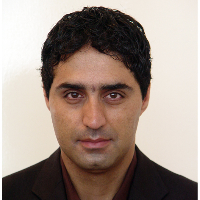Author’s Representation in Works and Fables with Roland Barth’s Theory
Author(s):
Article Type:
Research/Original Article (دارای رتبه معتبر)
Abstract:
in contemporary times, audience, meaning and artwork are not the same value, and the value of the audience is more and more important because it has new meanings in dealing with the effect. In the contemporary era, the author has been marginalized. The contemporary world artist uses modern communication media to influence the audience more effectively. The theme of the body in contemporary times has been of interest to artists, and as a work of art, it is one of the most important innovations. Also, the meanings and position of the body have changed in art. The pre-study study of the Iraqi plan looks like a contemporary Iraqi artist, Wafa Bilal, who has immigrated to the United States. In his authoritative work, the text and the artist are the same, and meaning is transmitted through the written signs to the audience. Wafa uses digital art and computer art and chooses his body as the main tool for creating the work. The art of acting on the body of the artist is promoting a new discourse based on the values of today’s world. In this research, after examining Barthes’s ideas about the author, the effect of the plan of Iraqi Bilal was discussed, in which various cities were referred to as the body of the artist. This research focuses on the study of the body of the text by Bilal. According to the results, the art of the ear has various semantic layers. Also, the text is used as a sign of protest on his body, and the author and artist are one of his works. His post is related to one another, as an objection to the artist’s body, and is considered a part of the artist.
Keywords:
Barth , Meaning , Sign , Writing , Wafa Bilal , Contemporary Art
Language:
Persian
Published:
Journal of Graphic Arts and Painting, Volume:1 Issue: 1, 2019
Pages:
17 to 28
https://magiran.com/p2175683
مقالات دیگری از این نویسنده (گان)
-
Stylistic analysis of the painting of Sheikh Sanan and Dokhtar tarsa in the Haft Tanan roofed hall of Shiraz
الهه Panjehbashi *, Atefe Takrar
Journal of Negarineh Islamic Art, -
A study of the Mantiq Al-Tair Paintings by Kamal -Adin Behzad from the Suhrawardi’s Perspective
Rahil Barati*,
Comparative Literature Research, -
Recognizing the Structure of the Kerman Vase Carpet from the Late 17th Century from Burckhardt’s Point of View
Shiva Alaee Yazdi, Mansour Hosami Kermani *
Journal of Rahppoye, Hekmat-e Honar, -
The Confrontation of Identity Syndromes from the Perspective of Globalization and GlocalizationCase Study; Selected Works of Ane Mohammed Tatari and Rabee Baghshani
*, Maryam Peikari Alamdari
Journal of Fine Arts, -
Analysis of the Place of Dress and Dressed Women in the Works of Gustav Klimt
Rahil Barati *,
Journal of Visual and Applied Arts,





